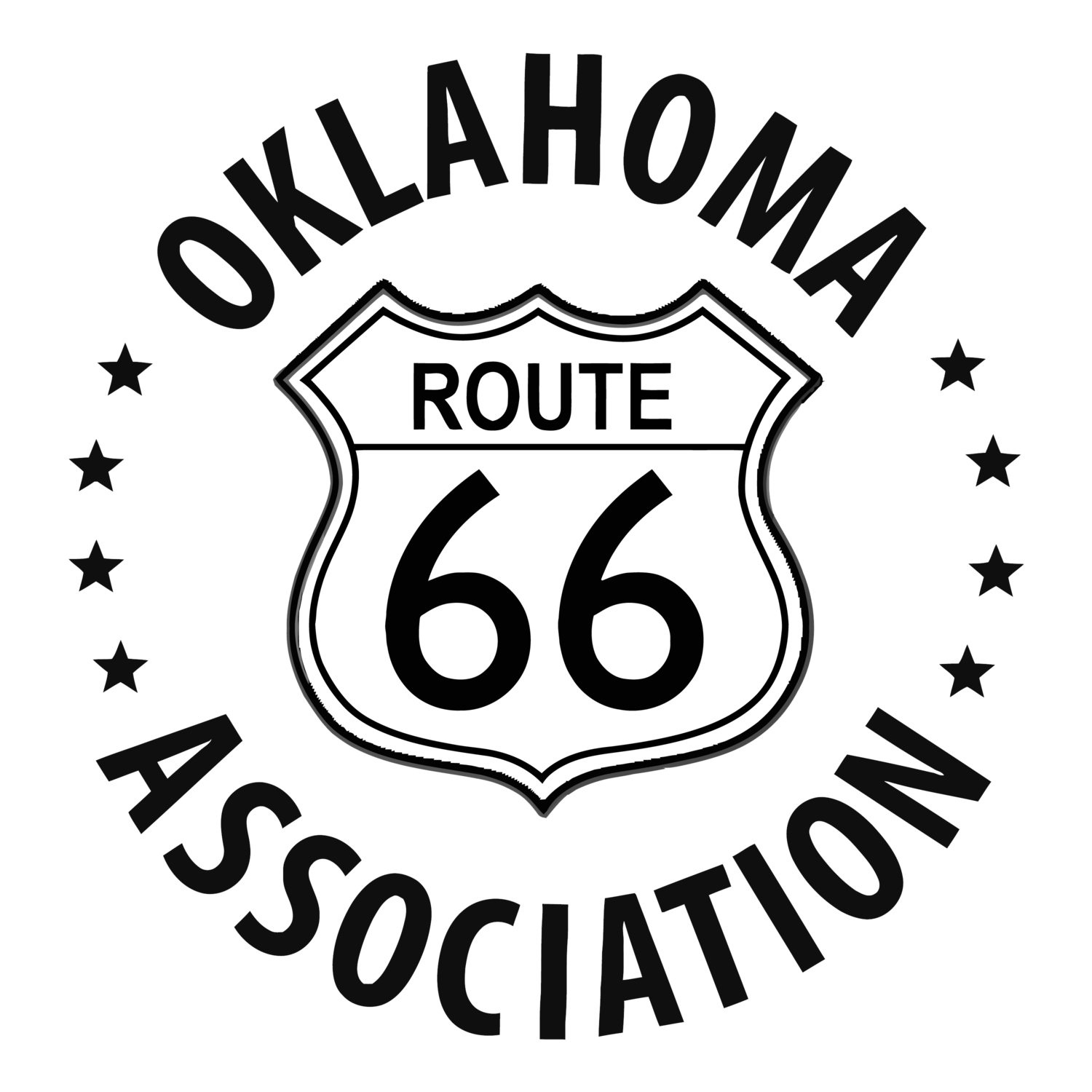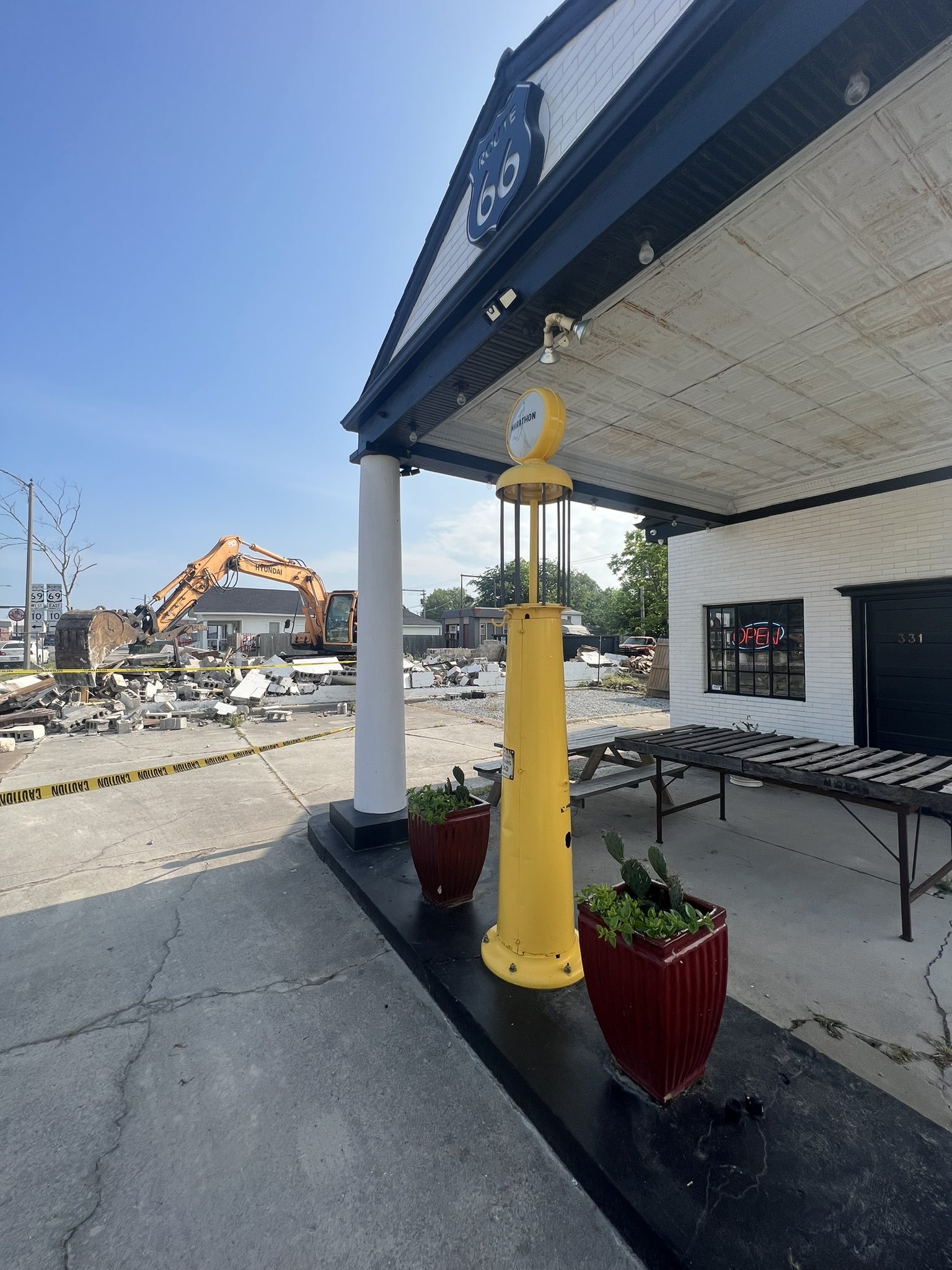A Marathon Victory
It’s a new era at Miami, Oklahoma’s historic Marathon Filling Station on Route 66.
When the station was built in 1929 and operated by Walter Patrick Donohue and his wife, it was a harbinger of what was to come on the soon-to-be Most Famous Road in the World. The simple house-like design blended in better to the neighborhood that surrounded it compared to the types of stations that had come before. The columns and canopy were inspired by Greek architecture; indeed, the Marathon Oil Company’s logo was that of a Greek runner and the slogan, “Best in the long run.”
An ad from the Miami News-Record on November 20, 1929 announcing the opening of the Marathon Station on South Main
In 1937, US Highway 66 was realigned at Steve Owens Blvd/US 69 to turn west instead of continuing south on Main Street. After carrying the Will Rogers Highway for 11 years, it became just another city street. With the rise of Route 66 tourism, of course, travelers would seek out the original alignments of the road and the landmarks that remained. Folks that had done their research kept going south to meet up with Oklahoma’s famous Sidewalk Highway.
The Marathon Station in 1995. Photo from the nomination for listing on the National Historic Register.
The Marathon Filling Station, just 425 feet from the stoplight where the alignment changed, sat on the northeast corner of Main and 4th with a brick building to the north. A building that completely blocked the vintage station from being seen by drivers following the busier, newer alignment of Route 66. The station remained virtually unaltered as the years went by, even though it served multiple purposes beyond fuel sales. It served as a monument company, a trucking company office, a car dealership, a shoe shop, and a beauty salon. The station was added to the National Historic Register in 1995.
The Marathon Station in 2013
Around 2010, the station was turned into a gift shop complete with vintage gas pumps and historic signage. The gift shop closed in 2016 and the future of the site became uncertain. Three years later, the station was purchased at auction by Eli Chenoweth for $18,000. “I see potential,” Chenoweth told the Joplin Globe at the time with a smile. “I’m obsessed with buildings like this. I can’t believe I own this.” He was just 19 years old but had already made a name for himself as an up-and-coming entrepreneur and preservationist.
Eli opened his first business, The Frozen Elephant, when he was 16. The shaved ice and coffee stand next to Waylan’s Ku-Ku Burger remains very popular, so much so that he also operates a mobile stand and takes it to events in the area. The Marathon station became the Miami Marathon Plant Shop, complete with replica Greek runners adorning the sides of the little building. The color scheme is a little different, but the station itself retains the same historic integrity that it’s held for the last 94 years.
But, again, unless you had done your research and knew the Marathon Station was over there or got lucky, it was out-of-sight for travelers exploring Historic Route 66, blocked by a brick building. On May 24th, however, that building to the north came down. Eli now owns that parcel of land along with a few other adjacent lots…and he has some big plans.
Demolition of the brick building that shielded the Marathon station from view.
Photo courtesy of Eli Chenoweth.
The cleared land increases the visibility of the Marathon station and will serve as a green space for the plant shop. The other plot, however, will soon be home to another historic service station. Eli acquired the second building not long after he bought the first one; it’s Miami’s oldest, dating back to the 1920s. It sat on Route 66, too, across the street from his coffee and shaved ice stand where a Walgreens stands today. Eli refers to it as the Hudson Station, because, “On every panel on the inside wall, it’s stamped with the Gus Hudson Oil Company.” Hudson Oil was founded in Kansas City and, at one time, sold product in over 30 states. It’s long since been absorbed by other companies; the station was moved and served as a car dealership for much longer than it housed a gasoline dispensary. This unique little building has a lot of character; it will look right at home on South Main Street.
The Hudson Station at its former home on A Street in Miami, where it served as a car dealership office.
The future of the Hudson Station is to serve as a southern location for Eli’s Frozen Elephant business and a landmark to encourage Route 66 travelers to continue south on Main Street after they see the Coleman Theatre and downtown Miami’s other offerings. “Our attention is primarily on South Main Street,” Eli said. “It’s one of the mot important stretches of Route 66 in Miami.” Chenoweth hopes the new development will encourage more beautification efforts and traveler exploration, leading them to Ottawa County’s famous Ribbon Road. “Our primary focus is to bring some beauty to South Main and prevent tourists from skipping out on Miami right after the gateway and see more of what we have to offer.”







